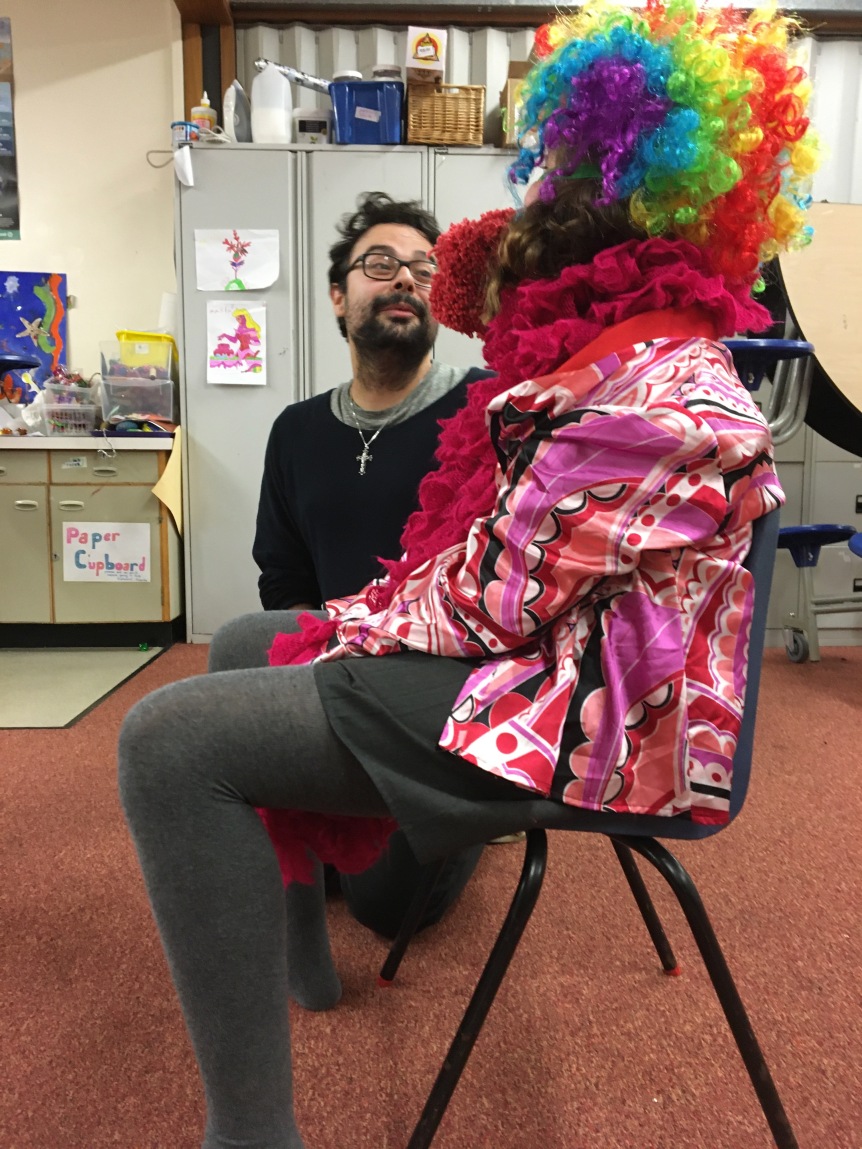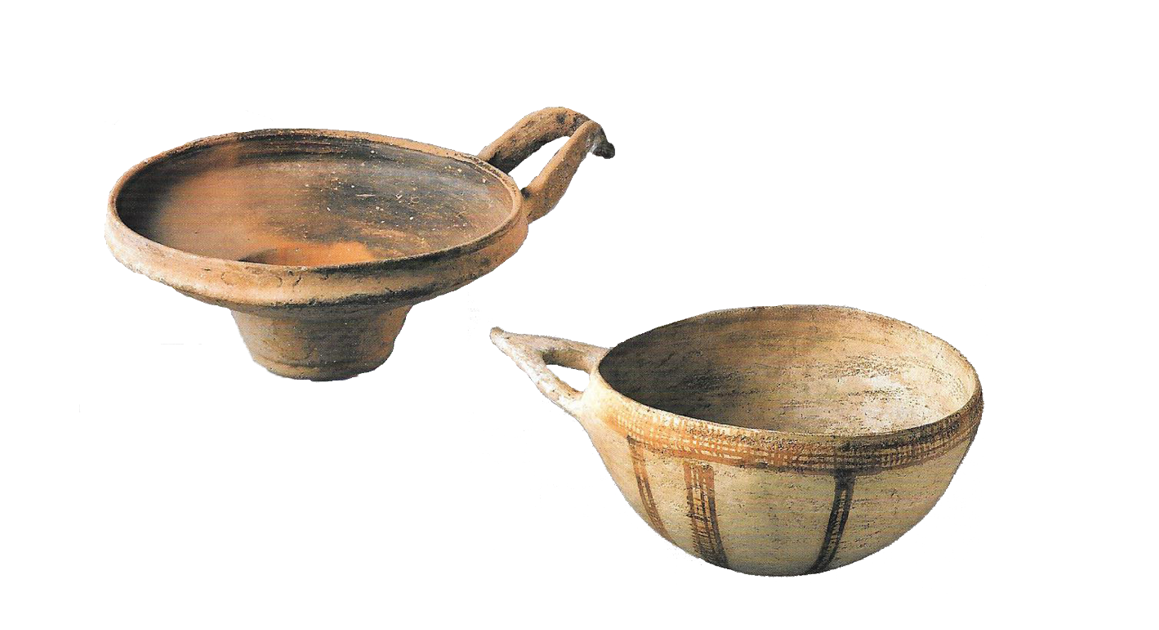My name is Stephen Jones. I am a theatre arts practitioner based in Fife, and since last spring I have had the privilege of working on the Through a Glass Darkly Project for the University of St Andrews. My role within the project has been to develop and deliver educational materials that use drama in conjunction with the Bridges Collection of Cypriot archaeology. The project now offers web-based drama activity packs using the 3D models, a drama and archaeology workshop series delivered by the team, and soon loan boxes with replica artefacts and drama-based lesson plans will be available for schools and community groups to borrow! You can find these resources and more under the Educators tab on our website!

Drama loan kit Teacher’s Pack with some replica objects.
I have always been fascinated by museums and the material culture of people. Having studied Social Anthropology at the University myself, I find objects to be powerful focal points of knowledge and history. As cultural products they raise a number of questions. What can an object say about a person or society? What can it tell us about their beliefs or their worldview? What is it about personal objects that gives them value and makes them precious? Whenever I look at an artefact from a collection such as this, I want to know how I can make a point of contact with the past. I want to know how I can make the artefact ‘speak’.
Throughout my career, I have worked in a variety of different educational and social settings. I have developed drama with a diverse span of age groups, from young children in youth theatre to adults with mental health issues. In every setting I have worked in I have witnessed the transformational nature of theatre. Theatre is a multifaceted and ecstatic art form; it is an exercise in skin-turning and shape-shifting. Theatre has the ability to lift a person out of themselves and into the thought-body of a character.
The benefits of embodying a character are twofold. On the one hand, it can create a liberating sense of psychological distance from the self. On the other, it can foster a connection that bridges the gap between self and others. Using archaeological objects, a theatre practitioner can create an added dimension to this process. Essentially, archaeological collections can be used as catalysts for getting people to ‘tap into’ the characters hidden ‘within’ the objects.
During workshops with the Bridges Collection, characters emerge that are both inspired by the cultures the objects come from, as well as imaginative creations that incorporate other people, times and places. The character embodiment exercises I use allows participants to lose themselves in a persona, leaving their insecurities and anxieties behind a ‘mask’. For example, in a session during our Literacy Day in May, I was approached by a small boy who told me that he could never have performed the way he did as himself, but when he was ‘The Emperor of Rome’, he had felt powerful and confident.

Stephen with a student in character in the hot seat.
Another instance that reflected this ‘shift-in-self’ happened when a colleague and I visited a school to deliver a CPD (Continual Professional Development) session for teachers, using our newly created replica artefacts and digital models. During our visit, one teacher who seemed quite shy and reluctant to speak came alive during a hot-seating exercise. Hot-seating is when you ask a person to answer questions in character in front of an audience. Before this particular session of hot-seating, I had asked the teachers to visualise a character using one of the objects in our collection. For the hot-seating exercise itself, they had to sit in a chair as their character whilst holding their chosen object. Suddenly our teacher in question transformed from a quiet observer into the haughty ‘Queen of Cyprus’, who, whilst clutching her precious bottle of perfume, informed me that she was highly offended that I had not immediately recognised her upon me introducing her to the audience!
As I said earlier, theatre is connective because it can form ties between people, place and time. I like to think of theatre as being both a reflective and reflexive medium. It is reflective in that when we are watching a play or when people are performing themselves, a mirror-image of social life and our culture is invoked. It is reflexive in that it can aid us in considering what we have just witnessed and/or performed. Theatre asks of us to be active spectators, or as theatre practitioner Augusto Boal posits, spect-actors. We are to straddle the divide between audience member and dynamic participant. Engagement with objects facilitates that shift from observer to actor because the learning process becomes a physicalized and embodied act. Character embodiment exercises that use objects are therefore an effective tool in promoting sensory and empathetic engagement with other people and the past.
This is best exemplified in the response from our Afterschool workshops. When asked what they enjoyed the most about the sessions, the children said they loved seeing and handling new replica artefacts. They enjoyed learning about the context of the artefacts, and thinking about how life would have been different for those who owned them. The creative thought that was inspired through drama with the objects acted as a bridge that spanned time, encouraging a sense of awareness in the children that remembering the past is important.
Archaeology is as much about the present as the past. I believe that drama can breathe life into what people perceive as the inanimate, transforming objects into subjects. For the people participating, I think that archaeology became a vessel, offering access to the humanity of the past through theatrical transformation.
